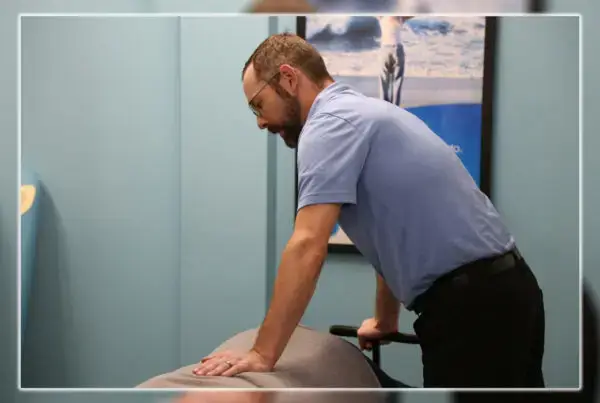
Symphysis pubic pain during pregnancy commonly makes sleeping, going up and down the stairs, and getting into and out of the car very difficult and painful. Many women suffer with this discomfort during their pregnancies especially as they approach the later months and the baby puts more pressure on this area. Typically, the symphysis pubis joint, located in the front central region of the pelvis, is very stable. However, pregnancy causes changes in hormones that make this joint more flexible in preparation for the growing baby and labor and delivery. Because pregnant women typically avoid taking medication during pregnancy, they may not know about natural ways to get rid of this pain. Proper sleeping position, safe daily activities, specific exercises, and chiropractic care are 3 ways to help with this pain.
Proper sleeping position
Expectant moms should sleep with a pillow between their knees. There are several pregnancy pillows that can be purchased, but even a regular pillow between the knees can do the trick. The idea is to keep the legs parallel to each other and to the bed. This will reduce the pressure on the symphysis pubis.
Safe Daily Activities
One sided activities should be avoided, especially those involving the legs. Asymmetric movements can create a shearing force on the symphysis pubis joint and can create more pain. Activities like lunges, going up and down stairs, carrying other children on one hip, and sitting with the legs crossed should be avoided.
Specific Exercises
Strengthening the symphysis pubis region through this specific exercise will help stabilize the joint and alleviate pain. pregnancy pelvic pain exercise
– Place a ball, rolled up towel, or other squeezable object between the knees.
– Squeeze the object using the pelvic muscles, not the knees. Hold for 5 seconds, then release.
– Repeat this exercise 5 times and do 4-5 times per day.
I addition, kegel exercises or other exercises that strengthen the pelvic floor are helpful. Here is a video of a great exercise to strengthen the the pelvic floor.




